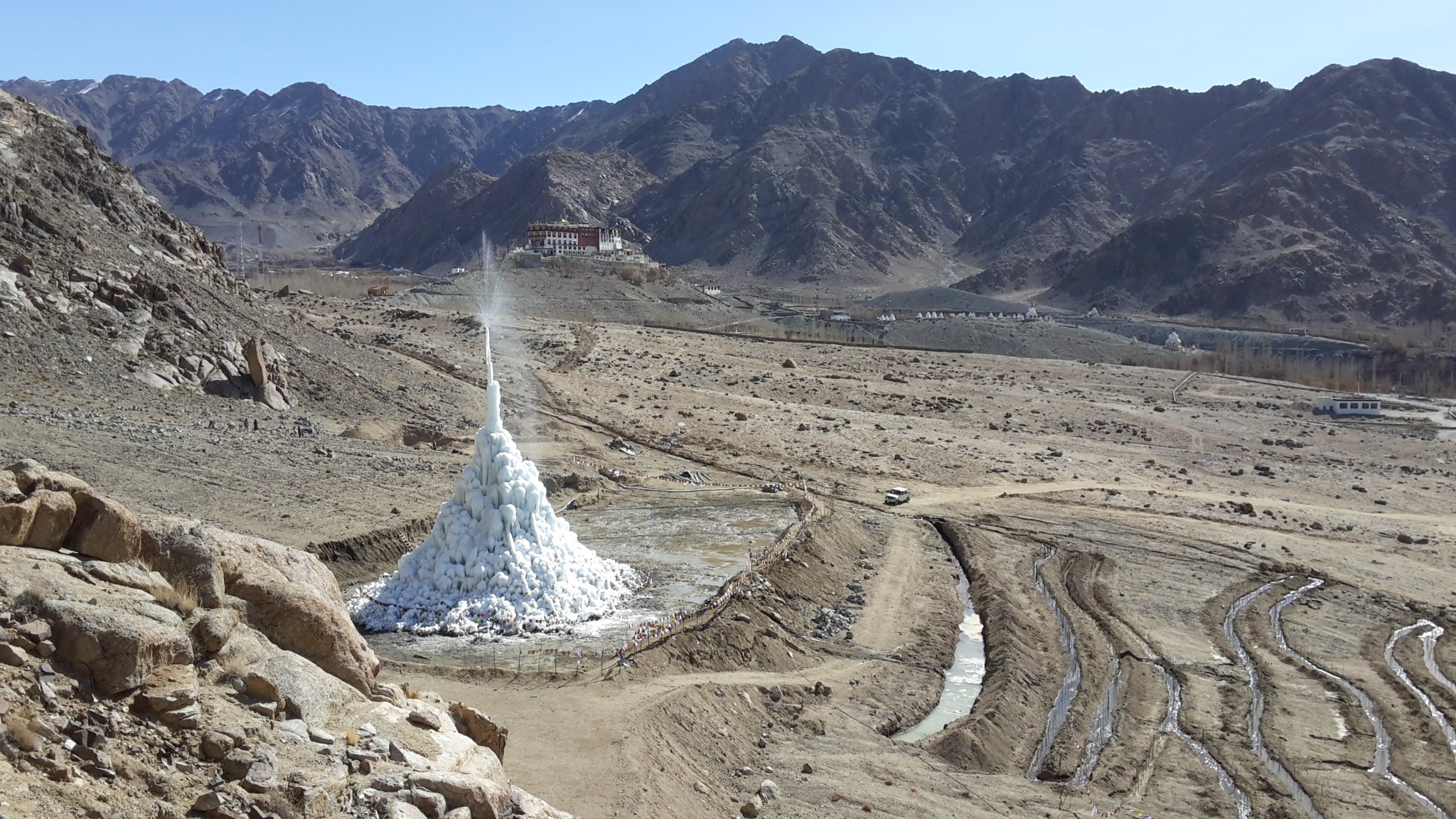
The essay goes into the prototype project called ‘Ice Stupa’. The project was realised in Ladakh (India), a territory in the Indian part of the Himalayas. Specifically, the project is located in the Indus Valley at an altitude of 3500 metres above sea level. Its location under the monsoon rains, behind the first great Himalayan Mountain range, makes the valley a natural high mountain desert. It is, therefore, scorched with little rainfall. The sun shines for about 360 days. The remaining glaciers provide water for living beings and agriculture. Due to the cold at these altitudes, the glaciers only begin to melt in May and only release sufficient water for cultivated land downstream. However, sowing and the start of growth should occur much earlier because plants grow much more slowly at this altitude. The result is an often poor harvest, which further impacts the already difficult living conditions of the Ladakhi people. The ‘Ice Stupa’ project represents an exciting water management solution when the virtuous management of natural resources is a crucial issue. The Ice Stupa system concretises the interaction between architecture and the environment. The essay also presents some projects realised in the Swiss Grisons.







